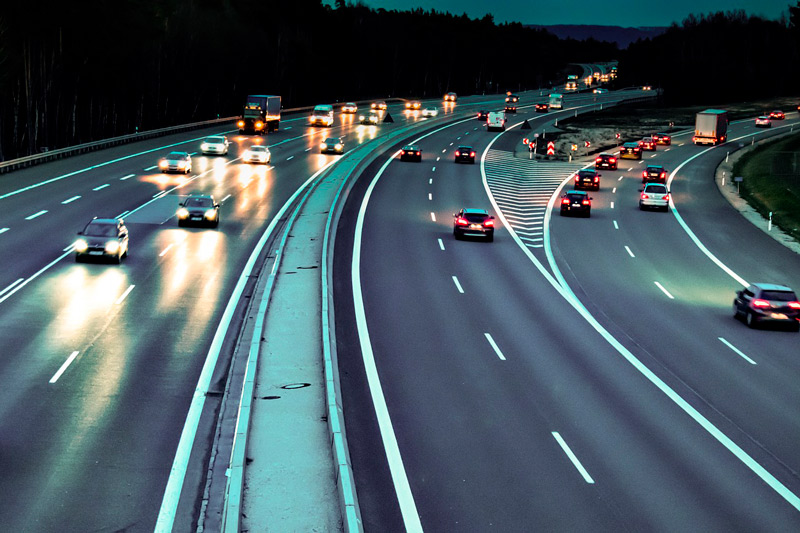Advice for driving at night
When driving at night, certain problems may arise, such as becoming drowsy, poor visibility or being blinded by other cars. Whether for work reasons, because of a long journey or because the daylight hours are shorter in winter, travelling in the dark may be uncomfortable for some. Because of this, in this article we provide advice on driving at night.
Imagine that you are on holiday and, after renting a car, you want to make the most of each day to enjoy your surroundings. You will certainly try to extend your time by going out very early and returning very late. So, if you are thinking of getting on the road when the sun has gone down, we want to offer you a few recommendations.
10 tips for driving at night
A beautiful sunset is a unique moment that you will be able to capture thanks to the many apps that you can download on your phone. But then you have to return home, or to wherever you are staying, and driving at night can be dangerous.

Check your lights
Before starting on a journey or going out at night, check that all the lighting devices are working perfectly. If you tend to drive during the darkest times of night, we recommend that you install the most advanced technologies: LED or xenon headlamps, intelligent lights, a good computer on board…
Adjust your mirrors
If your internal and external mirrors are in an appropriate position, external lights will be less bothersome: you will avoid being blinded by other car’s headlights and will be more comfortable on the road. You should also be respectful towards other drivers when using your headlights and fog lights.
Put your lights on before it gets dark
If you put on your dipped headlights an hour before sunset your eyes will slowly become accustomed to the change in light and the colours of the road. This will allow you to have a more pleasant transition from evening to night.
Adapt your speed
Visibility is reduced at night, so reducing your speed and increasing the safe distance are two measures that will help you to react better to any potentially unexpected event. The road conditions should indicate your behaviour.
Rest
If you know that you have to drive at night, be rested at those times. Even so, don’t forget to have more frequent rest breaks, every hour and a half or two hours, to stretch your legs and relax a little.
Pay more attention
Precisely because of problems with drowsiness, try to concentrate more actively. To avoid problems, check your mirrors more often, chat with your passenger if you can, and keep the car interior well ventilated.

Just in case
Despite all of this, at the first signs of drowsiness (tearing or itchy eyes, eyestrain…), find a safe place to rest and take some time off before getting back on the road.
Avoid distractions
Play some music that helps you to be more aware of the road. Avoid driving with the interior light on, as this creates a high contrast between the lighting inside the car and the exterior which will worsen your vision.
Keep your windscreen and lights clean
Although this will help you at any time of the day, at night you are more aware of the bothersome reflections on your vehicle windscreen. Ensure that the windscreen is always in good condition and that the headlights are at an appropriate height to give you the best visibility without being a nuisance to other drivers.
Use roads that are in good condition
Lastly, try to use roads with good lighting and that are in good condition. The best are motorways or dual carriageways, as they are designed for long journeys and have various lanes to avoid problems with other vehicles.
These are some tips for driving at night that may help you when making journeys in your rental car from Lara Cars. Despite all of this, if you feel concerned or uncertain about taking the car out at these times, avoid doing so whenever possible.






